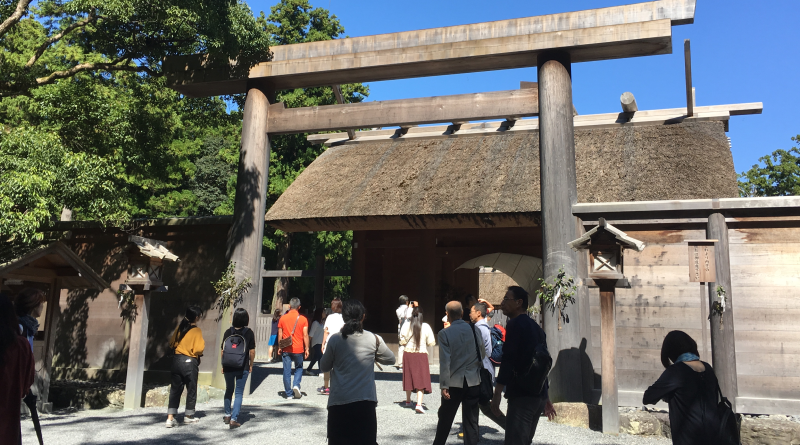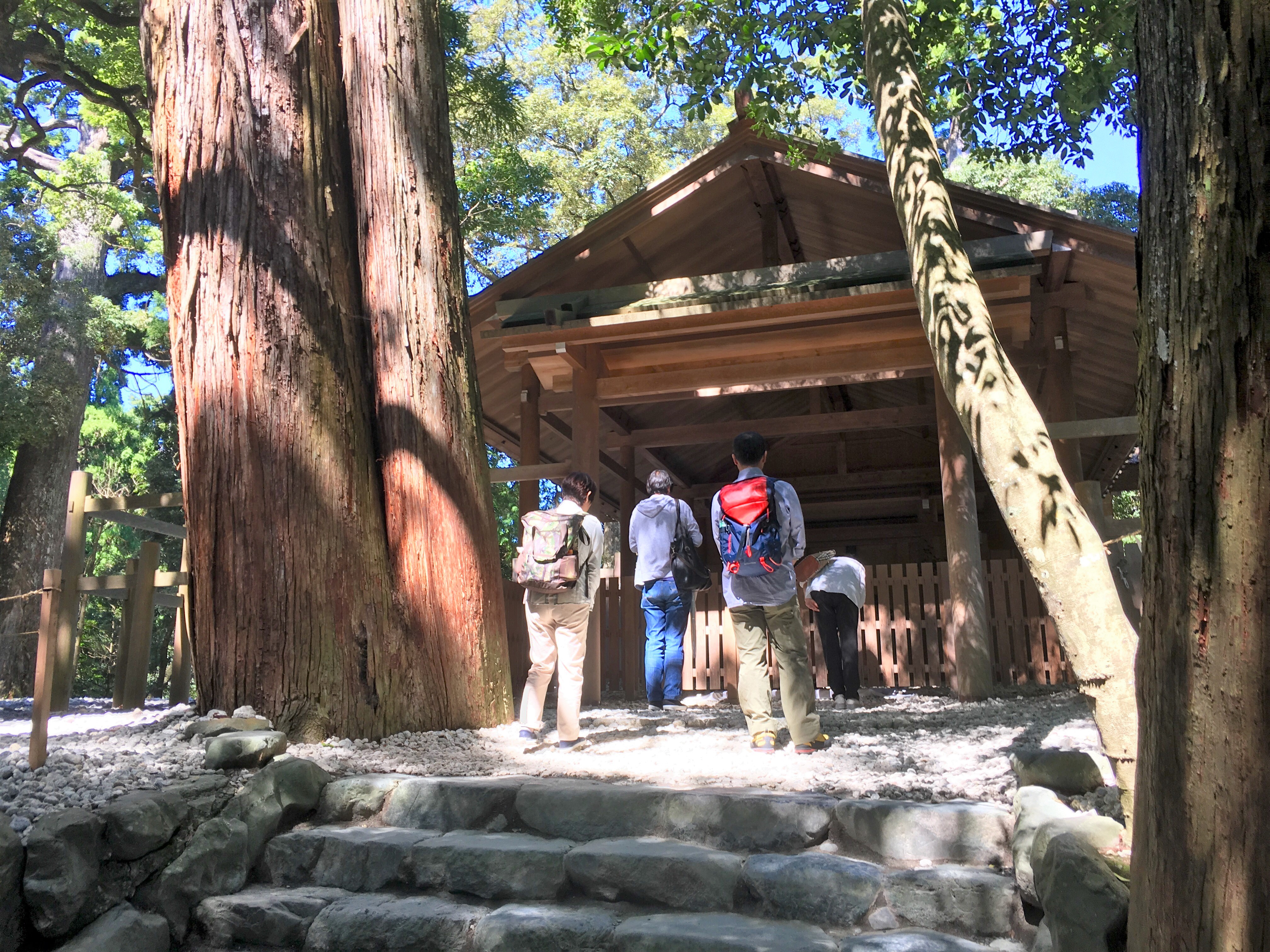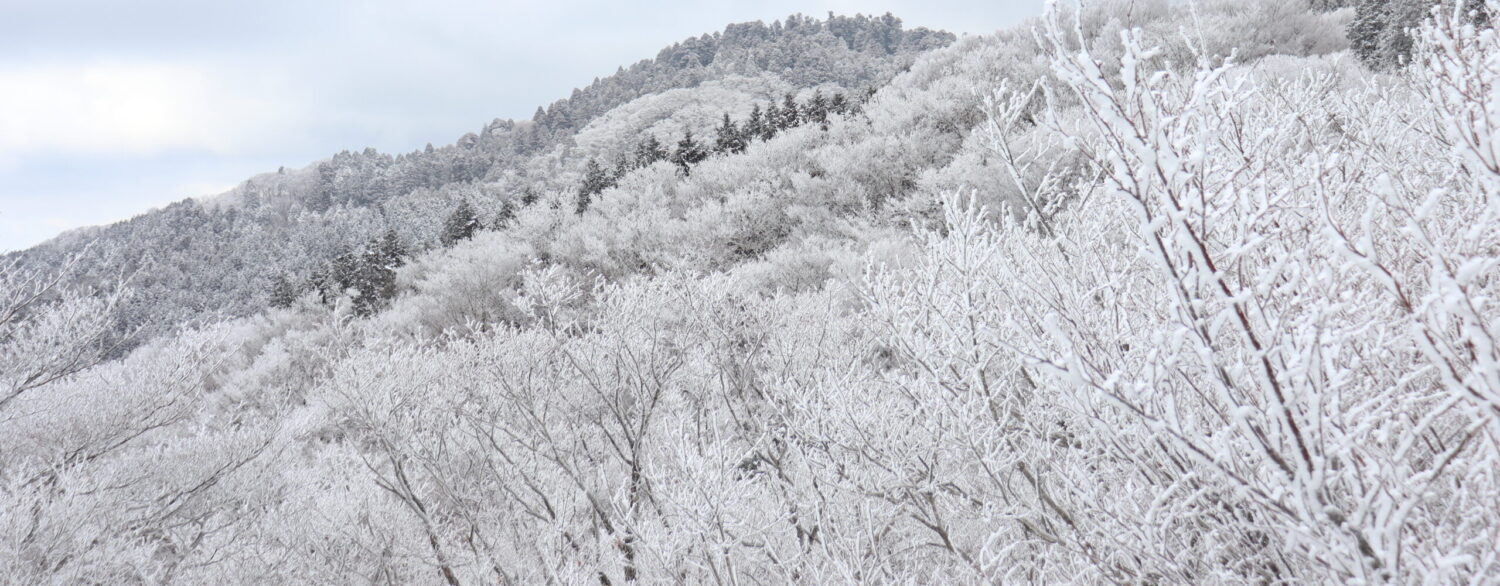
Ise Jingu: Exploring the Geku
For centuries, going to Ise Jingu was the highlight of a commoner’s life. While going to Ise Jingu may not be the once in a lifetime event for Japanese people it once was, it is still important. Ise Jingu is one of the most visited places in Japan, specifically the two main shrines called the Naiku and the Geku. Since there is a lot of ground to cover in both of these shrines, today we will focus on the outer shrine, the Geku.
God of the Geku
It is common knowledge that Ise Jingu enshrines Amaterasu. What a number of people are not completely aware of however, is that the Geku is for a completely different god.
Toyouke Dai Jingu, commonly known as the Geku [外宮] enshrines Toyouke no Oomikami [豊受大御神]. Toyouke no Oomikami is the child of Wakumusubi, a god born when Izanami gave birth to Kazuguchi, the god of fire. The uke of Toyouke refers to food, hence she is worshiped as the goddess of the harvest or agriculture.
Getting to the Geku
The Geku is very easy to access. It is a 10 minute walk from Ise-shi station of both the JR and Kintetsu stations.

On the whole, the Kintetsu Line will be the better of the two to use. From Osaka it takes 2 hours to get to Ise City and only 1 hour from Nagoya. The JR Rapid Service “Mie” from Nagoya isn’t bad, but you have to pay an additional fee if you have JR Pass because it uses the Ise Railway, which is a private line. Remember, your JR Pass does not cover private railways.
[mappress mapid=”66″ width=”95%”]Once you do get to Ise-shi Station, finding the Geku will not be hard at all. There is a near constant flow of people walking on a wide road called the Geku Sando. The Geku Sando is lined with tons of food vendors, restaurants, and souvenir shops, and is a lot of fun to walk down.
Shrine Grounds
After only a few short minutes, you will be at the entrance of the Geku. If you read our Basic Guide to Shinto Shrines, something should seem amiss straight away. Where are the shishi and komainu? In fact, Ise Jingu has never had a komainu or shishi, because the shrine predates this tradition.

If you are very observant you will also notice that there are no shimenawa either. Instead sakaki branches are tied to torii throughout Ise Jingu. The sakaki is a sacred tree and its mark the borders of sacred spaces.

Once you pass through the Ichino Torii, you will be at the Kaguraden wher you can purchase charms or get a shuin.

Near the Kaguraden you will notice a large empty plot of land. This is a kodenchi [古殿地] and will be the site of a new structure during the Shikinen Sengu.

Shortly after you finish at the Kaguraden you will approach Geku’s honden, or inner shrine. Ise Jingu’s honden is called a shoden [正殿] and is surrounded by four large fences. Collectively, this structure is called a shogu [正宮].

The shogu is especially sacred and unfortunately, you are not allowed to take any pictures. Inside of shogu is the shoden, where Toyouke no Oomikami is enshrined. Unfortunately, the fences make it hard to see much at all. You are allowed to pray outside of the second fence, and if you pay (probably a lot) you will be escorted by a priest to pray at the third fence.
Yuiitsu Shinmei Zukuri
The shrines of Ise Jingu use a very special style of architecture called yuiitsu shinmei zukuri [唯一神明造]. This style, along with taisha zukuri, is on the oldest styles of shrine architecture. Unlike taisha zukuri, yuiitsu shinmei zukuri is chracterized by sharp straight lines.
Additionally, there are slight structural differences between the Naiku and the Geku. The roof of the Naiku and Geku differ in the number of decorative logs on the roof, or katsuogi. The Naiku has an even number of katsuogi white the Geku has a odd number. Another difference is are the chigi, the large “X” like structures on top of the roofs. Inside the Naiku all the chigi have flat tops, while in the Geku, the edges slant downwards.

Taga no Miya [多賀宮]
Taga no Miya enshrines the chaotic-side of Toyouke no Oomikami’s soul, the aratama. It is the most important of the smaller shrines in the Geku.

To get to Taga no Miya you will walk across kame iwa bridge before climbing a long flight of stairs.


Kaze no Miya [風宮]
This shrine honors the gods of the wind Shinatsuhiko no Mikoto and Shinatobe no Mikoto. These are the gods supposedly responsible for the strong winds that prevented the Mongols from invading Japan. The original kamikaze.

Tsukiyomi no Miya [月夜見宮]
A little ways outside the Geku is Tsukiyomi no Miya, which enshrines the god of the moon, Tsukiyomi. Tsukiyomi is a rather mysterious god and the Kojiki only mentions him a few times. However, he is the brother of Amaterasu and Susano-o, so he is still a very important god.


Take Time to Explore
As stated before, the Geku isn’t that terribly big. If all you do is go visit Toyouke no Oomikami, your trip will be very quick. But what fun is that? Slow down and take your time in the Geku. Personally, we have been there 3 times and we still find new or interesting things every time we go!
Coming next time,
In to the Naiku!
The adventure continues…

Leave a Reply